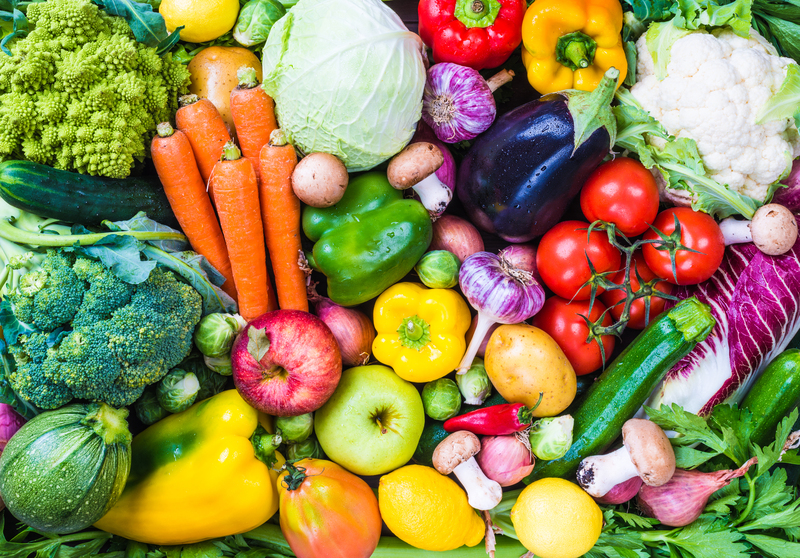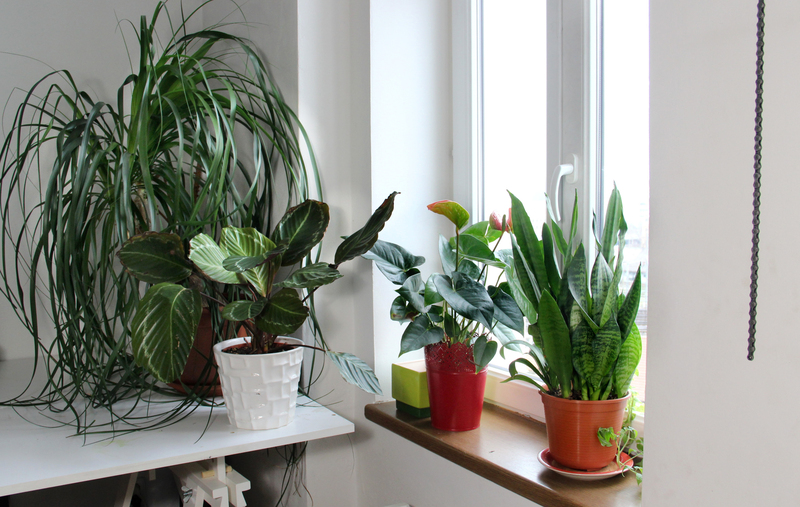Home Composting Guide
Posted on 01/05/2025
Composting is a sustainable way to recycle organic waste into nutrient-rich soil amendments for your garden or potted plants. Home composting reduces landfill waste, lowers greenhouse gas emissions, and improves soil health. Whether you're an experienced gardener or a complete beginner, this comprehensive guide will walk you through everything you need to know about home composting.
Getting Started with Home Composting
Before you start composting, it's essential to understand the basics. Composting involves the decomposition of organic materials by microorganisms under controlled conditions. To get started, you'll need a balance of "greens" (nitrogen-rich materials) and "browns" (carbon-rich materials) along with moisture, air, and time.
Step 1: Choosing a Composting Method
There are several composting methods to choose from, depending on your needs and resources:
- Backyard Composting: Ideal for those with space in their backyard. You can use a compost bin or create a compost pile.
- Vermicomposting: Uses worms to break down organic matter and is suitable for indoor composting or small spaces.
- Indoor Composting: Utilizes composting units designed for indoor use, perfect for urban dwellers.

Setting Up Your Compost Bin
Once you've selected a composting method, the next step is to set up your compost bin. Here's how you can do it:
Step 2: Selecting the Right Compost Bin
Your compost bin can be store-bought or homemade. Here are some options:
- Compost Tumblers: These bins are easy to turn, speeding up the composting process. Ideal for smaller gardens.
- Wooden Bins: Often DIY and customizable, these bins allow for good aeration.
- Plastic Bins: Durable, resist pests, but may need holes for better ventilation.
- Worm Bins: Specifically designed for vermicomposting. They have layers to facilitate worm movement and decomposition.
What to Compost and What to Avoid
Knowing what can and cannot be composted is crucial for successful composting. Here's a quick guide:
Step 3: Collecting Compostable Materials
Items to Compost:
- Greens: Fruit and vegetable scraps, coffee grounds, tea bags, fresh grass clippings, and plant trimmings.
- Browns: Dry leaves, straw, cardboard, paper, sawdust, and wood chips.
Items to Avoid:
- Meat and dairy products (attract pests and create odor issues)
- Oils and fats
- Diseased plants
- Pet waste
- Weeds that have gone to seed
- Non-biodegradable materials like plastic and metals
Maintaining Your Compost Pile
Maintenance is key to keeping your compost pile active and effective. Compost requires the right balance of moisture, aeration, and temperature.
Step 4: Balancing Greens and Browns
The ideal compost mix consists of about two-thirds browns and one-third greens. This ratio ensures that the microorganisms have enough carbon for energy and nitrogen for growth. Too much nitrogen can make the pile smell, while too much carbon will slow down decomposition.
Step 5: Aerating Your Compost
Oxygen is crucial for the microorganisms breaking down the organic matter. Turn your compost pile every 1 to 2 weeks to introduce air and prevent it from becoming anaerobic (which leads to odors).
Understanding the Composting Process
Composting is a dynamic, multi-stage process. Here's what happens inside your compost bin:
Step 6: Monitoring Moisture Levels
Your compost pile needs to be about as moist as a wrung-out sponge. Too dry, and decomposition slows down; too wet, and it can go anaerobic. Add water if it's dry and more browns if it's too wet.
Stages of Composting:
- Mesophilic Phase: Initial phase where bacteria begin breaking down easily decomposable materials at moderate temperatures (20-45 ?C).
- Thermophilic Phase: The temperature rises (45-70 ?C), speeding up the breakdown of tougher organic materials and killing pathogens.
- Maturation Phase: Cooler temperatures return, and the compost stabilizes, with fungi and actinomycetes breaking down any remaining organic matter.
Harvesting and Using Finished Compost
When your compost is ready, it will be dark, crumbly, and have an earthy smell. Typically, it takes 4-6 months to reach this stage, depending on the composting conditions.
Step 7: How to Harvest Compost
Remove finished compost from the bottom of the pile or bin. If using a tumbler, it may be more uniform and ready to use all at once. Screen the compost to remove larger, undecomposed pieces.
Use your finished compost in various ways:
- Soil Amendment: Mix into garden soil to improve texture and nutrient content.
- Mulch: Apply around plants to retain moisture and suppress weeds.
- Potting Mix: Combine with other ingredients for nutrient-rich potting soil.
- Top Dressing: Spread on lawns to rejuvenate growth.
Troubleshooting Common Composting Issues
Even with the best intentions, things can sometimes go wrong with your compost pile. Here are common issues and how to address them:
Foul Odors: Usually due to too much nitrogen or lack of oxygen. Improve aeration by turning the pile and adding more browns.
Pests and Rodents: Avoid composting meat, dairy, and greasy foods. Use a well-secured bin if pests are a problem.
Slow Decomposition: This could be due to a lack of nitrogen, moisture, or air. Adjust the balance of greens to browns, ensure the pile is adequately moist, and turn it regularly.

Advanced Composting Techniques
Once you've mastered basic composting, you might want to delve into advanced techniques to optimize your compost pile further.
Hot Composting: Speeds up decomposition using a specific ratio of greens to browns and regular turning to maintain high temperatures.
Bokashi Composting: A fermentation process using bran inoculated with beneficial microorganisms to break down food waste anaerobically.
Composting with Biochar: Incorporate biochar to enhance soil structure, increase microbe activity, and sequester carbon.
Conclusion
Composting at home is a rewarding and environmentally-friendly practice that turns waste into valuable compost for your garden. By understanding the materials, balancing greens and browns, and maintaining the right conditions, you can produce high-quality compost and contribute to a more sustainable world.
Whether you start with backyard composting, vermicomposting, or indoor composting, the key is to be patient and attentive. Experiment with different methods and materials to find what works best for you. Happy composting!




